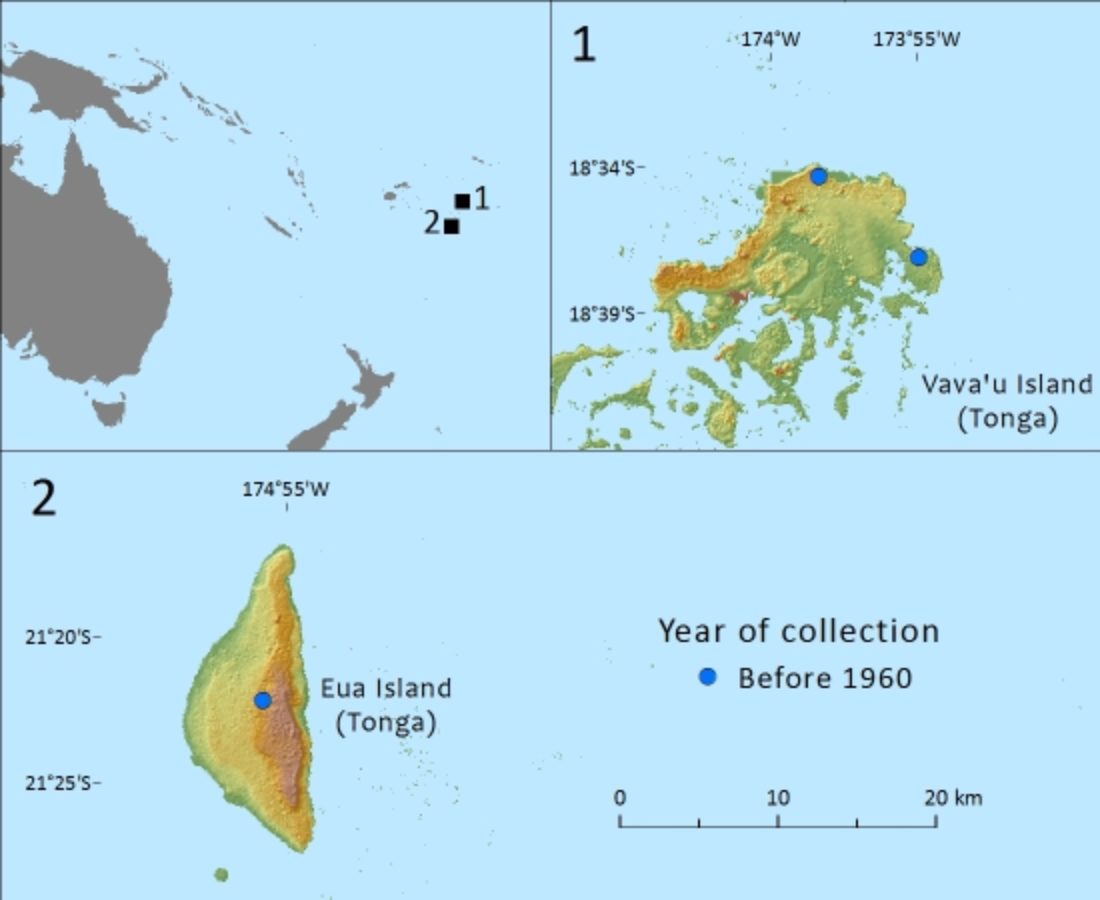Podocarpaceae
Podocarpus pallidus
Endemic to the Tongan Islands in the southwestern Pacific where the small populations on two islands are at risk from stochastic destructive events
References and further reading
- Franklin, J., D. Drake, L. Bolick, D. Smith & T. Motley. (1999). Rain forest composition and patterns of secondary succession in the Vava’u Island Group, Tonga. Journal of Vegetation Science 10: 51–64.
- Yuncker, T.G. (1959). Plants of Tonga. Bernice P. Bishop Museum Bulletin 220: 283.
- Thomas, P. 2013. Podocarpus pallidus. The IUCN Red List of Threatened Species. Version 2015.2. <www.iucnredlist.org>. Downloaded on 08 September 2015
